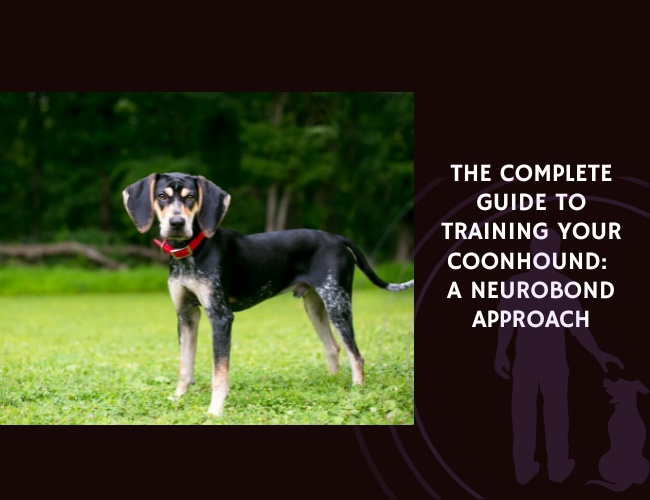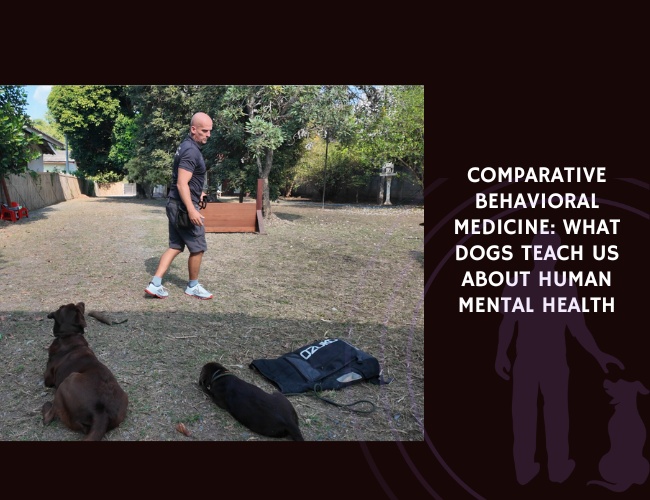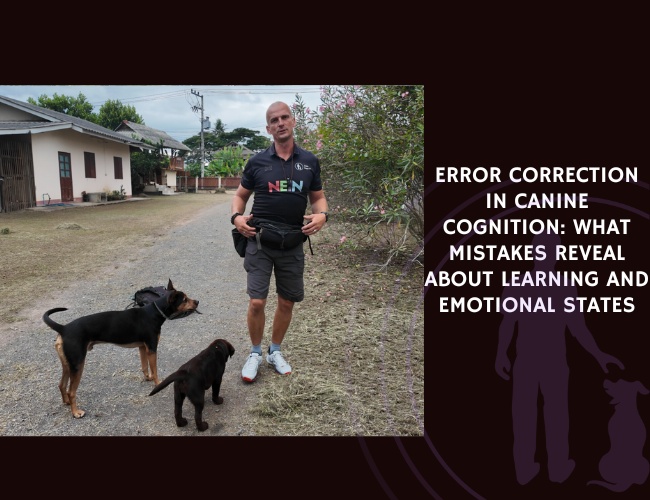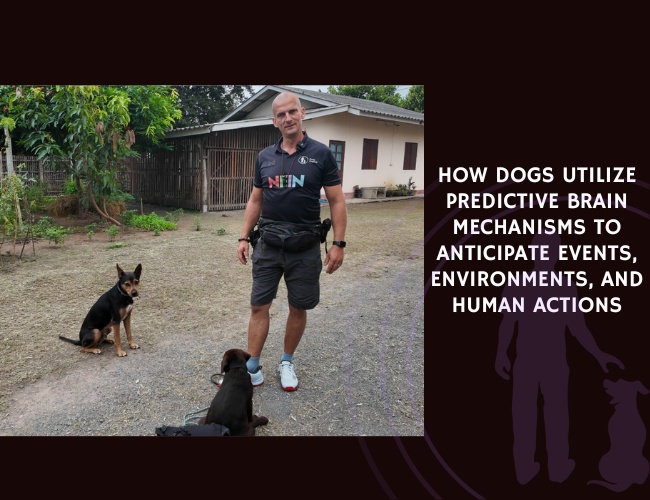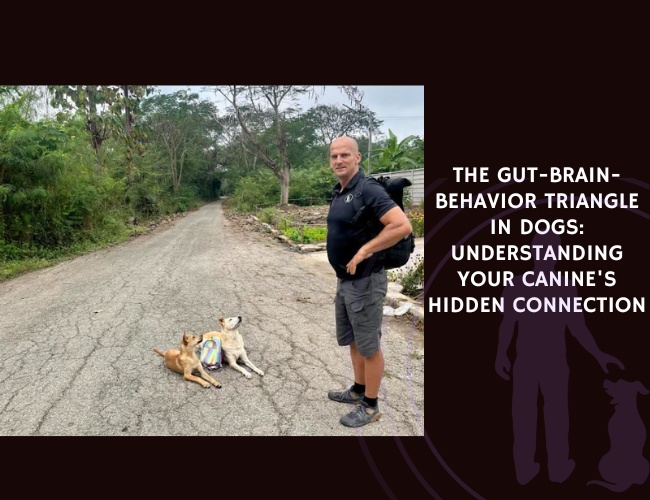Introduction
Have you ever watched your dog methodically select and chew on specific grass blades in your backyard? Or noticed them consuming small amounts of dirt after a particularly stressful day? These behaviors, often dismissed as quirky canine habits, may actually represent remnants of an ancient wisdom passed down from their wolf ancestors – a sophisticated system of self-medication that we’re only beginning to understand.
For millions of years, wild canids have navigated their environments using not just their physical prowess, but an intricate understanding of nature’s pharmacy. Today, as we share our homes with their domesticated descendants, we’re witnessing glimpses of this ancestral intelligence in action. Let us guide you through the fascinating world of canine self-healing behaviors, where science meets instinct, and where understanding your dog’s natural tendencies could transform how you approach their health and wellbeing. 🐾
The Evolutionary Journey: From Wolf Autonomy to Canine Companionship
Understanding the Wild Blueprint
In the pristine wilderness where wolves roam, survival depends on more than sharp teeth and pack coordination. Wild wolves demonstrate remarkable behavioral autonomy, making independent decisions about territory defense, hunting strategies, and yes – even healthcare choices. These magnificent creatures possess what researchers call a “duplex” information-processing system, combining instinctual responses with learned behaviors to navigate their complex world.
Key aspects of wolf autonomy include:
- Sophisticated problem-solving abilities in obtaining food and avoiding threats
- Complex social communication within pack hierarchies
- Independent decision-making in foraging and self-care
- Innate understanding of beneficial vs. harmful substances
You might notice that your domestic dog still exhibits shadows of these behaviors – the way they investigate new environments, their selective eating habits, or their preference for certain resting spots when feeling unwell. These aren’t random choices; they’re echoes of millions of years of evolutionary wisdom.
The Domestication Shift
The journey from wolf to dog represents one of nature’s most profound transformations. Through approximately 15,000 years of domestication, we’ve selected for traits that enhance human-dog cooperation while inadvertently diminishing some survival instincts. Modern dogs have evolved from obligate carnivores to omnivores, developing genetic changes like increased amylase gene copies that allow them to digest starches – a clear adaptation to living alongside grain-eating humans.
This shift brought both gains and losses. While dogs gained the ability to read human emotions and cooperate in ways wolves cannot, they also became more dependent on human care for their basic needs. The research comparing hand-raised wolves and dogs reveals that while both can form bonds with humans, wolves retain significantly greater independence and less reliance on human social cues.
Natural Self-Medication Behaviors: What Science Tells Us
The Grass-Eating Phenomenon
Perhaps the most commonly observed self-medication behavior in dogs is grass consumption. When your furry friend heads straight for those long blades after breakfast, they’re engaging in a behavior that serves multiple purposes:
Digestive regulation: Many dogs instinctively consume grass when experiencing gastrointestinal distress. The fibrous material may help induce vomiting to expel irritants or simply add roughage to aid digestion.
Nutritional supplementation: Grass contains trace minerals and nutrients that may address subtle deficiencies in their diet.
Behavioral satisfaction: Sometimes, the act itself provides sensory stimulation and satisfies an innate foraging instinct.
Recent studies suggest that less than 25% of dogs vomit after eating grass, challenging the common assumption that grass-eating is primarily for purging. Instead, it appears to be a normal behavior inherited from their wild ancestors who consumed plant matter found in prey stomachs.
Geophagy: When Dogs Eat Dirt
The consumption of soil, known as geophagy, represents another fascinating self-medication strategy. While it might alarm you to see your dog deliberately eating dirt, this behavior has deep evolutionary roots:
Mineral acquisition: Soil can provide essential minerals like iron, zinc, and calcium, particularly in areas where natural mineral licks exist.
Detoxification: Certain clays can bind to toxins in the digestive system, potentially helping neutralize harmful substances.
Microbiome support: Soil contains diverse microbial communities that may help maintain gut health – though this comes with modern risks we’ll discuss later.
Wild canids have been observed seeking out specific types of clay-rich soils, particularly during times of digestive upset or after consuming potentially toxic prey. Your dog’s dirt-eating episodes might be their attempt to access this ancient medicine cabinet.
Selective Plant Consumption
Beyond grass, dogs sometimes seek out specific plants with apparent intentionality. While scientific documentation remains limited, numerous anecdotal accounts describe dogs:
- Seeking out dandelion leaves during allergy season
- Chewing on willow bark (containing natural aspirin-like compounds) when experiencing pain
- Consuming mint family plants during digestive upset
This selective behavior mirrors the well-documented zoopharmacognosy observed in other species, from chimpanzees using medicinal plants to treat parasites to elephants seeking out specific tree barks during illness. 🧡
The Science of Zoopharmacognosy in Canines
Understanding the Mechanisms
Zoopharmacognosy – the practice of animals self-medicating with plants and other natural substances – operates through several interconnected mechanisms:
Instinctual recognition: Dogs may possess innate abilities to identify beneficial substances through scent and taste receptors evolved over millennia.
Learned associations: Positive experiences with certain plants (feeling better after consumption) can reinforce self-medication behaviors.
Physiological triggers: Internal states like nausea, inflammation, or parasite load may activate seeking behaviors for specific remedies.
Research on the canine gut microbiome reveals fascinating connections between diet, microbial diversity, and health outcomes. When dogs are switched to raw meat diets more closely resembling their ancestral food sources, their gut microbiota partially converges toward wolf-like profiles, suggesting retained adaptive capacity.
Chemical Complexity in Natural Remedies
The plants and substances dogs instinctively seek often contain complex chemical profiles:
Secondary metabolites: Plants produce compounds like alkaloids, terpenes, and phenolics that can have medicinal properties.
Prebiotic fibers: Many plants provide food for beneficial gut bacteria, supporting microbiome health.
Anti-inflammatory compounds: Natural substances often contain compounds that reduce inflammation and pain.
Antimicrobial properties: Some plants possess natural antibacterial or antiparasitic qualities.
This chemical sophistication suggests that dogs’ self-medication behaviors aren’t random but potentially targeted responses to specific physiological needs.
Modern Interference: How We Limit Natural Behaviors
Understanding Canine Intelligence: What We’re Suppressing
Before we examine how modern practices interfere with natural behaviors, it’s crucial to understand just how intelligent dogs truly are. Your dog possesses cognitive abilities that rival those of a 2-3 year old human child. They can learn over 150 words, solve complex problems, demonstrate episodic memory, and even show evidence of metacognition – thinking about thinking. This isn’t just party trick intelligence; it’s a sophisticated mental toolkit evolved for survival and self-maintenance.
Dogs demonstrate remarkable capabilities including:
- Environmental mapping: Creating mental maps of territories and resources
- Social intelligence: Reading and responding to complex social cues
- Predictive reasoning: Anticipating consequences and adjusting behavior accordingly
- Self-assessment: Recognizing their own physical and emotional states
When we restrict these intelligent beings through our well-meaning but misguided practices, we’re not just limiting movement – we’re suppressing an entire system of self-care that has evolved over millennia.
The Crate and Leash Paradox
While modern pet-keeping practices aim to ensure safety, they often inadvertently suppress natural self-regulatory behaviors and create the very problems they seek to prevent:
Crate training’s hidden costs:
- Cognitive suppression: Dogs confined to crates cannot exercise their problem-solving abilities. This mental stagnation can lead to anxiety, destructive behaviors when released, and an inability to self-soothe
- Disrupted self-regulation: In nature, dogs would move to different locations based on temperature, comfort, or health needs. Crate confinement eliminates these micro-decisions that maintain physical and mental balance
- Learned helplessness: Extended crating can create a psychological state where dogs stop trying to meet their own needs, leading to depression and decreased resilience
- Stress accumulation: Unable to engage in natural stress-relief behaviors like exploration or movement, crated dogs often develop chronic stress patterns manifesting as excessive barking, separation anxiety, or aggression
The leash as behavioral disruptor: Think about this – every time you walk your leashed dog past interesting scents or potential remedies, you’re overriding thousands of years of evolutionary programming. The seemingly simple leash creates profound behavioral disruptions:
- Interrupted investigation sequences: Dogs naturally follow scent trails in specific patterns that help them gather environmental information. Constant leash redirection breaks these sequences, creating frustration and incomplete behavioral patterns
- Forced proximity stress: Leashes often force dogs into closer proximity with strangers (human and canine) than they would naturally choose, triggering stress responses and potential reactivity
- Gait disruption: Natural canine movement involves variable speeds and directional changes that aid digestion and joint health. Steady-paced leash walks eliminate these benefits
- Sensory deprivation: Dogs gather crucial health information through scent. When we hurry them past interesting smells, we’re essentially blindfolding their primary sense
Research on off-leash dog behavior reveals something profound: when given freedom, dogs don’t just “run around.” They engage in sophisticated behavioral sequences including circular scent investigations, specific elimination patterns that communicate health status, and selective plant sampling. These aren’t random actions – they’re part of an integrated system of self-care and environmental assessment.
The Intelligence We’re Wasting
When we overmanage our dogs’ lives, we create a tragic paradox. These brilliant animals, capable of:
- Detecting cancer through scent
- Predicting seizures before they occur
- Finding their way home across vast distances
- Selecting medicinal plants when ill
…are reduced to passive recipients of human decision-making. Is it any wonder that modern dogs exhibit unprecedented levels of anxiety, compulsive behaviors, and cognitive dysfunction?
From Protection to Problems: The Behavioral Cascade
Our well-intentioned restrictions create a cascade of behavioral issues:
Stage 1: Initial Frustration
- Attempted natural behaviors are repeatedly interrupted
- Dog experiences cognitive dissonance between instinct and restriction
- Stress hormones begin to elevate
Stage 2: Behavioral Adaptation
- Natural behaviors become redirected into problematic outlets
- Excessive licking, chewing, or vocalization emerge
- Hypervigilance and reactivity develop
Stage 3: Learned Dysfunction
- Dog loses confidence in their own judgment
- Increased dependence on human direction for basic decisions
- Natural self-regulatory abilities atrophy
Stage 4: Chronic Behavioral Issues
- Generalized anxiety disorders
- Compulsive behaviors
- Aggression or extreme fearfulness
- Inability to cope with novel situations
Did you know that working dogs – those given jobs and autonomy – show significantly lower rates of behavioral problems than pet dogs? This isn’t because they’re “busier”; it’s because they’re allowed to use their intelligence in meaningful ways.
The Cognitive Cost of Constant Control
Consider this scenario: Your dog, a descendant of wolves who successfully navigated complex ecosystems for millennia, is now told when to eat, where to sleep, when to eliminate, and how fast to walk. Every decision has been removed from their control. The psychological impact is profound:
Decision fatigue reversal: Instead of experiencing healthy decision fatigue from making choices, dogs experience “decision atrophy” – the gradual loss of decision-making abilities from lack of use.
Autonomy frustration: Dogs have an innate need for some level of control over their environment. When every aspect is managed, this need turns into chronic frustration, often manifesting as:
- Demand barking
- Resource guarding
- Escape attempts
- Obsessive behaviors
Intelligence redirection: Unable to use their cognitive abilities for natural purposes, dogs redirect this intelligence into problematic solving – like figuring out how to escape yards, destroy “puzzles” (your furniture), or manipulate their humans through increasingly complex attention-seeking behaviors.
The Misunderstood “Misbehavior”
What we label as behavioral problems are often intelligent responses to an impossibly restricted life. Your dog isn’t being “bad” when they:
- Destroy things: They’re attempting to investigate and interact with their environment in the only way available
- Pull on leash: They’re trying to follow natural movement patterns and investigation sequences
- Bark excessively: They’re expressing frustration at their inability to communicate and make choices
- Develop separation anxiety: They’ve been made so dependent that autonomous functioning becomes impossible
These aren’t character flaws or training failures – they’re symptoms of suppressed intelligence and natural behaviors.
The Overprotection Paradox
In our desire to keep dogs safe, we’ve created environments that are psychologically harmful. Consider how wild canids manage risk:
- They learn through controlled exposure to challenges
- They develop judgment through making choices and experiencing consequences
- They maintain resilience through regular problem-solving
Our modern dogs, wrapped in metaphorical bubble wrap, never develop these crucial life skills. The result? Dogs who are paradoxically more anxious, more reactive, and less capable of handling the real world than their ancestors who faced actual predators.
Dietary Standardization Challenges
Commercial dog foods, while nutritionally complete, may lack the diversity that supports robust self-regulatory systems:
Lost complexity: Wild canids consume varied diets including organ meats, bone, fur, and stomach contents of herbivorous prey – providing a complex array of nutrients and compounds.
Reduced bitter receptors usage: Many medicinal plants taste bitter, and limiting exposure to these flavors may diminish dogs’ ability to recognize beneficial substances.
Microbiome implications: Highly processed diets can reduce gut microbial diversity, potentially impacting the body’s ability to process and benefit from natural remedies.
Environmental Sterility
Our tendency to create overly clean, controlled environments may actually work against our dogs’ health:
- Limited exposure to diverse microbes affects immune development
- Reduced contact with soil organisms eliminates potential probiotic benefits
- Chemical lawn treatments remove or contaminate natural remedy sources
Controversial Behaviors: Understanding Coprophagy
Beyond the “Ick” Factor
Perhaps no canine behavior generates more human disgust than coprophagy – the consumption of feces. Yet this behavior, observed across many species, may serve important biological functions:
Microbiome regulation hypothesis: Dogs may consume feces to acquire beneficial bacteria or reestablish disrupted gut flora, particularly after antibiotic treatment or illness.
Nutritional reclamation: In nature, nutrients that escape initial digestion can be recaptured through coprophagy, a strategy used by many animals including rabbits and rodents.
Immune system priming: Controlled exposure to pathogens through coprophagy might help maintain immune readiness – though this comes with significant risks in modern environments.
Modern Risks vs. Ancestral Benefits
While coprophagy may have served important functions in ancestral environments, modern contexts present new challenges:
Parasite transmission: Domestic environments often have higher parasite loads due to population density
Chemical contamination: Modern feces may contain harmful medications, pesticides, or other toxins
Disease concentration: Urban and suburban settings can create disease “hot spots” not found in wild territories
Understanding these behaviors through an evolutionary lens helps us respond more appropriately – addressing underlying causes rather than simply suppressing symptoms.
Supporting Natural Intelligence: A Holistic Approach
Creating Enriched Environments
To support your dog’s natural self-regulatory abilities while ensuring safety:
Diverse outdoor access:
- Provide supervised access to varied natural environments
- Allow investigative behaviors during walks
- Create a “sniff garden” with safe, diverse plants
Dietary diversity:
- Rotate protein sources
- Include appropriate fresh foods
- Consider supervised foraging opportunities
Stress reduction:
- Minimize unnecessary confinement
- Provide mental stimulation
- Respect your dog’s need for autonomy
Recognizing Self-Medication Attempts
Watch for these signs that your dog may be attempting self-medication:
- Sudden interest in specific plants or substances
- Repeated seeking of particular textures or tastes
- Changes in eating patterns coinciding with health changes
- Selective consumption of non-food items
Rather than immediately stopping these behaviors, consider:
- What might be triggering the behavior?
- Is there an underlying health issue?
- Can you provide safer alternatives?
Working with Veterinary Professionals
Modern veterinary care and ancestral wisdom need not be at odds. Progressive veterinarians increasingly recognize the value of:
Integrative approaches: Combining conventional medicine with understanding of natural behaviors
Behavioral medicine: Addressing the root causes of concerning behaviors rather than just suppressing them
Nutritional diversity: Moving beyond “complete and balanced” to consider evolutionary nutrition
Environmental enrichment: Recognizing the health impacts of lifestyle and environment
Case Studies: Ancient Wisdom in Modern Dogs
Luna’s Seasonal Allergies
Luna, a 5-year-old Labrador, developed a peculiar habit every spring. Her owner, Sarah, noticed Luna would seek out and chew on plantain leaves in the backyard – but only during allergy season. Rather than stopping this behavior, Sarah researched plantain’s natural antihistamine properties and worked with her vet to monitor Luna’s self-medication alongside conventional allergy management. The result? Reduced medication needs and a dog who seemed more comfortable navigating her seasonal challenges.
Max’s Digestive Intelligence
Max, a German Shepherd with chronic digestive issues, began exhibiting selective dirt-eating behaviors after meals. His veterinarian discovered that Max was specifically seeking clay-rich soils. Instead of simply forbidding the behavior, they introduced controlled amounts of bentonite clay as a supplement, mimicking what Max was instinctively seeking. His digestive issues improved significantly, demonstrating how honoring natural instincts can complement medical treatment.
Bailey’s Post-Surgery Recovery
Following surgery, Bailey, a Border Collie, persistently tried to lick and chew on calendula flowers in the garden. Her observant owner researched the plant’s wound-healing properties and, with veterinary approval, incorporated calendula preparations into Bailey’s recovery protocol. This case highlights how dogs may retain knowledge of beneficial plants even in modern settings. 🐾
The Philosophy of Canine Autonomy
Rethinking the Human-Dog Relationship
Our cultural tendency toward paternalistic care – assuming we always know what’s best for our dogs – may actually hinder their wellbeing. Consider:
Cognitive biases at play:
- Anthropomorphism leading to misinterpretation of needs
- Confirmation bias reinforcing human-centric care models
- Automation bias over-relying on standardized protocols
The autonomy imperative: Dogs aren’t simply passive recipients of care but active participants in their health. Respecting their agency means:
- Observing without immediately intervening
- Providing choices rather than imposing solutions
- Learning from their instinctual wisdom
Ethical Considerations
The ethical implications of limiting natural behaviors extend beyond immediate health concerns:
Welfare perspectives: True welfare includes psychological wellbeing and the ability to express natural behaviors
Rights-based approaches: Considering dogs as individuals with inherent worth rather than property
Relationship quality: More autonomous dogs often display better problem-solving abilities and stronger bonds with their humans
Practical Implementation: Bridging Ancient and Modern
Safe Exploration Guidelines
Create opportunities for natural behavior expression while maintaining safety:
Supervised foraging sessions:
- Choose pesticide-free environments
- Learn to identify common medicinal plants
- Allow investigation while preventing consumption of unknowns
Home herb gardens:
- Plant dog-safe herbs like chamomile, calendula, and mint
- Observe which plants your dog shows interest in
- Document patterns and preferences
Texture variety:
- Provide different surfaces for walking and resting
- Include natural materials in living spaces
- Allow access to grass, dirt, and sand in controlled settings
Documentation and Observation
Become a student of your dog’s behavior:
Behavior journaling:
- Note unusual consumption patterns
- Track correlations with health states
- Document seasonal variations
Photo documentation:
- Capture images of plants your dog investigates
- Build a library of preferred substances
- Share observations with your veterinary team
Integration with Veterinary Care
Transform veterinary visits into collaborative sessions:
Preparation strategies:
- Bring behavior journals to appointments
- Discuss observed self-medication attempts
- Ask about integrative treatment options
Questions to ask:
- “What might my dog be trying to address with this behavior?”
- “Are there safer ways to support this instinct?”
- “How can we honor their natural intelligence while ensuring safety?”
Future Directions: Research and Understanding
Emerging Research Areas
The field of canine zoopharmacognosy is ripe for exploration:
Genomic studies: Identifying genetic markers for self-medication behaviors
Behavioral mapping: Creating comprehensive catalogs of medicinal plant preferences
Microbiome connections: Understanding how self-medication affects gut health
Chemical analysis: Identifying active compounds in commonly sought plants
Citizen Science Opportunities
Dog owners can contribute to scientific understanding:
- Participate in behavior survey studies
- Document self-medication attempts systematically
- Share observations with research communities
- Collaborate with veterinary behaviorists
Conclusion: Is Your Dog Right for You?
As we’ve explored the remarkable world of canine self-healing intelligence, a crucial question emerges: Are you ready to be the guardian your dog needs? This isn’t about having the perfect yard or the most expensive food – it’s about approaching your relationship with curiosity, respect, and wisdom.
Your dog carries within them millions of years of evolutionary intelligence. They’re not simply pets requiring management, but complex beings with sophisticated systems for maintaining their own health. When you see your dog eating grass, investigating new plants, or even engaging in behaviors you find puzzling, remember – you’re witnessing ancient wisdom in action.
The path forward isn’t about returning to a completely wild state or abandoning modern veterinary care. Instead, it’s about integration – honoring ancestral intelligence while navigating modern challenges. It’s about seeing your dog as a teacher as much as a companion, learning from their instincts while providing the safety and care they need in our shared world.
Next steps for the enlightened dog guardian:
- Observe without immediately correcting
- Create environments that support natural behaviors
- Build collaborative relationships with veterinary professionals who respect animal autonomy
- Trust the wisdom your dog carries in their genes
As you continue this journey with your canine companion, remember that every grass blade they carefully select, every mysterious behavior they exhibit, is part of a conversation spanning millennia. By listening with open minds and hearts, we not only improve our dogs’ lives but deepen our understanding of the natural world and our place within it. 🧡
The question isn’t whether dogs possess healing intelligence – they do. The question is whether we possess the wisdom to recognize, respect, and support it. In that recognition lies the potential for a revolution in how we care for our canine companions, moving from dominance to partnership, from management to mutual flourishing.
Your dog is inviting you into an ancient understanding. Will you accept?


